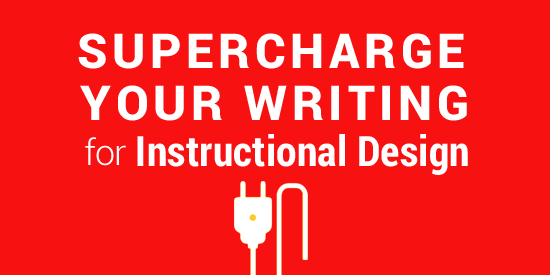
Stepping into the realm of instructional design often comes with an unexpected surprise: the extent of writing required. Crafting captivating learning experiences involves more than just delivering information; it’s about inspiring our audience, even when the material seems mundane or uninspiring.
A fantastic way to invigorate your writing is to adopt techniques from various disciplines. The realms of Advertising, Journalism, Hollywood, and User Experience can offer novel approaches to engage your audience effectively. Discovering a applicable strategy and tailoring it to your needs is the key.
Innovative Techniques from Advertising
1. Understand Your Audience
While it may seem trivial, truly understanding your audience is crucial. The advertising sector invests heavily in audience research, but as instructional designers working on budget-conscious projects, you can still achieve valuable insights. Engage with your audience through conversations, meet-ups, or focus groups, whether online or in person. This effort will enhance your writing by familiarizing you with their terminology, challenges, and priorities, revealing fresh avenues to connect. For more insights, explore Best Practices For Interviewing Your Audience.
2. Establish the Right Voice
Effective advertising resonates with its audience by adopting an appropriate voice. This encompasses style, tone, and personality. In instructional design, the voice that connects with your audience holds greater significance than other styles. Whether it’s a teacher’s authority or a colleague’s familiarity, adjust your voice based on your audience’s preferences.
3. Embrace Active Voice
Think about the last time a radio ad captured your attention. Generally, these commercials engage directly with their audience. Shifting to an active voice in your writing invites readers into the action. For example, compare these two sentences:
- Active: I discovered it through the grapevine.
- Passive: It was discovered by me through the grapevine.
While passive voice has its place, an active construction is far more dynamic and engaging. Focus on energizing your writing by prioritizing active voice.
Insights from Journalism
4. Craft Compelling Headlines
Journalists are masters at creating headlines that draw in readers, even when the topic doesn’t initially appeal to them. Take a moment to consider compelling headlines like:
- “You’re probably cooking your bacon all wrong” (and I clicked even as a vegetarian)
- “New species found in Chernobyl!”
- “Expert discusses key groups that could save humanity.”
Notice how they spark curiosity? These strategies can be applied to course titles or topics. For instance:
- Transform “Hand Hygiene in Hospitals” into “These Germs Laugh at Your Hand Sanitizer!”
- Reframe “Data Protection Guidelines” to “What Hackers Hope You’ll Never Discover About Your Company’s Data.”
- Revamp “Customer Service Standards Training” to “The One Thing Customers Never Forget After the Call.”
5. Create Intriguing Teasers
Journalists excel at crafting teasers that entice readers. Integrate this technique in your eLearning courses by drawing learners in with enticing sneak peeks. For example, in a course about customer service:
- This server didn’t study the wine menu. Did it affect his tips?
- Amy avoided small talk with customers. What were their impressions?
- Discover what happened when Amir seated customers at a dirty table.
Experiment with teasers in your menus and lesson titles to boost learner engagement.
Lessons from Hollywood
6. Introduce Challenges for Your Protagonist
According to Lisa Cron, author of Wired for Story, compelling narratives feature protagonists facing significant hurdles. When framing scenarios or stories, ensure your main character has obstacles to overcome to avoid a flat narrative.
Instead of simply teaching email etiquette rules, narrate a story about an employee who lost a client due to informal emails, only to later master effective communication.
7. Showcase Character Growth
A pivotal element of storytelling is character transformation through overcoming challenges. Engaging learners through a protagonist’s growth can captivate your audience and enrich your narratives. This strategy shines in longer scenarios or stories, making for more immersive learning experiences.
Insights from User Experience Design
8. Streamline for Clarity
User experience designers understand the importance of concise, effective microcopy—the brief instructions that guide users. As learning designers, composing succinct microcopy elevates clarity in your eLearning products. Trim unnecessary words and ensure each choice communicates effectively. For instance, see How to Write Your Best Microcopy.
9. Infuse Personality
Witty messages in apps can brighten users’ experiences. In my time-tracking application, an amusing reminder pops up when I forget to stop a timer: “Great Scott! You’ve got a timer still running. Travel back in time to edit it or click here!”
Incorporate playful, friendly messages into your eLearning courses. Rather than a monotonous “Complete the exercise before continuing,” you might say, “What’s the rush? Finish the exercise—you’ll appreciate the knowledge!”
Resource:
Explore more about varied writing styles that enhance instructional design in 10 Types of Writing for Instructional Design.



